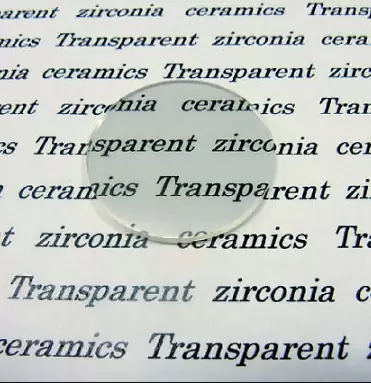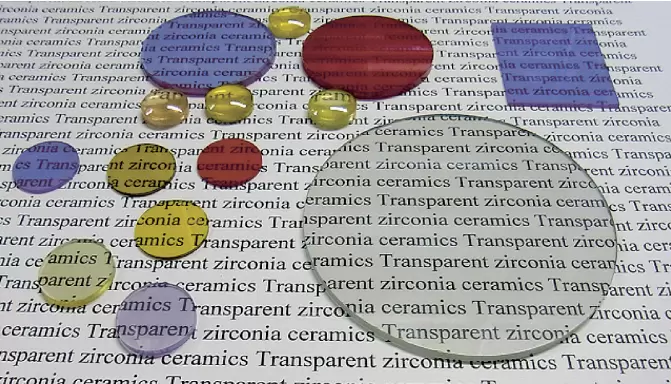In the realm of modern materials science, the quest for innovative materials that combine aesthetic appeal with functional prowess is ever-present. Among the plethora of materials studied, zirconia (ZrO2) emerges as a fascinating subject, particularly in its potential to be transformed into transparent ceramics. This exploration delves into the challenges, advancements, and applications of zirconia-based transparent ceramics, shedding light on a material that may well revolutionize industries ranging from optics to defense.
The journey to harness the potential of zirconia for transparent ceramic applications is fraught with technical hurdles. The high sintering temperatures required to achieve full density in zirconia ceramics pose a significant challenge. Zirconia's melting point soars at 2715°C, and at room temperature, it predominantly exists in a monoclinic phase. However, the cubic phase of ZrO2, devoid of optical anisotropy, is more suitable for transparency. Stabilizing zirconia in the cubic phase typically involves the use of stabilizers such as yttria (Y2O3), leading to the development of yttria-stabilized zirconia (YSZ) ceramics for transparent applications.

YSZ transparent ceramics boast a high refractive index of 2.16, surpassing that of conventional optical glass and resins, which paves the way for miniaturization in digital devices through the production of optical lenses. These ceramics exhibit excellent transmittance in the visible to mid-infrared spectrum (0.25 to 7.5μm), coupled with remarkable resistance to wear, acid, and alkali corrosion, and erosion by rainwater. This combination of properties makes them ideal for applications such as transparent armors, infrared windows, and nose cones for aerospace vehicles, showcasing a wide array of potential uses.
The saga of YSZ transparent ceramics began in 1986 when Japan's Tosoh Corporation, with Tsukuma leading the research, produced the world's first YSZ transparent ceramic using TiO2 as a sintering aid and employing hot isostatic pressing (HIP) for sintering. Subsequent improvements in HIP technology by Tsukuma and others led to YSZ ceramics with optical qualities akin to single crystals, highlighting the importance of fine grain size and minimized intergranular porosity for enhanced optical performance. German company Schott AG further characterized the optical properties of YSZ ceramics, noting the effects of TiO2 doping on reducing birefringence, with an optimal mix of TiO2 and Y2O3 enhancing the material's optical clarity.
In 2010, researchers at Japan's National Institute for Materials Science made strides in refining the grain size of YSZ ceramics to the nanometer scale using spark plasma sintering (SPS), though they noted a reduction in transmittance with increased sintering time and temperature due to oxygen vacancies. Efforts to reduce these vacancies and residual porosity have been crucial in improving the optical quality of YSZ ceramics.

In contrast, China's research into transparent ceramics, while still evolving, has seen significant contributions from institutions like the Shanghai Institute of Ceramics, with universities across the country including Northeastern University, Nanchang Aeronautical University, Tianjin University, and Shanghai University making notable advances. Techniques such as the glycine-nitrate process for synthesizing nanoscale yttria-stabilized zirconia powders and innovative sintering methods like SPS have been explored to achieve transparency in zirconia ceramics, albeit with challenges in optimizing transmittance within the visible spectrum.
The exploration of zirconia as a base for transparent ceramics is a testament to the dynamic nature of material science. Despite the challenges posed by high sintering temperatures and the need for phase stabilization, the advancements in this field hint at a future where zirconia-based transparent ceramics play a pivotal role in a variety of applications, from enhancing optical devices to offering new solutions for defense and aerospace technologies. The ongoing research and development efforts, both internationally and domestically, signify a concerted move towards overcoming the obstacles and unlocking the full potential of zirconia transparent ceramics.

Submit your demand,
we will contact you ASAP.

Sanxin New Materials Co., Ltd. focus on producing and selling ceramic beads and parts such as grinding media, blasting beads, bearing ball, structure part, ceramic wear-resistant liners, Nanoparticles Nano Powder

